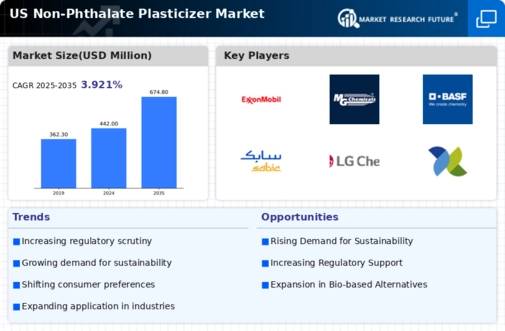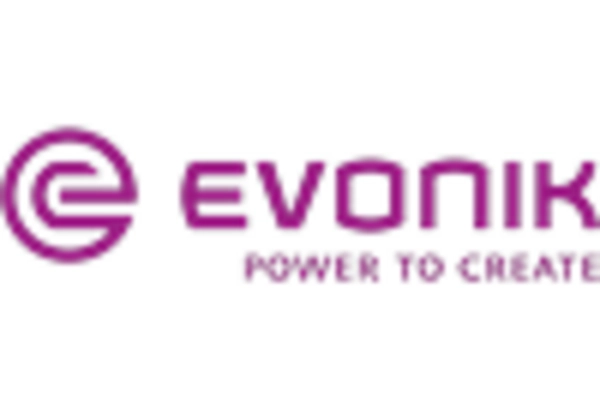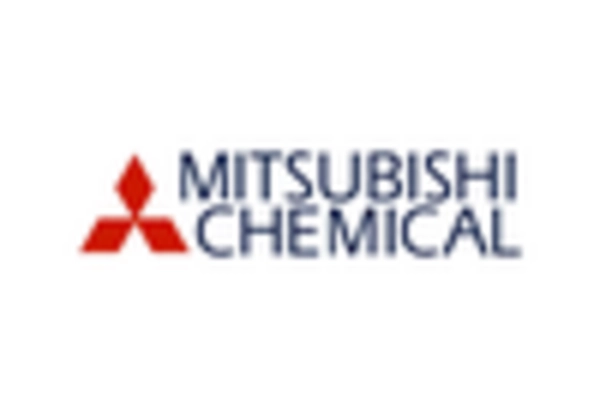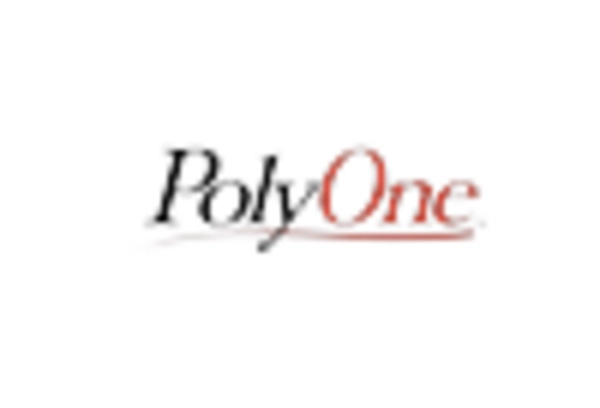The non phthalate-plasticizer market is currently characterized by a dynamic competitive landscape, driven by increasing regulatory scrutiny and a growing consumer preference for safer alternatives. Key players such as BASF SE (Germany), Eastman Chemical Company (US), and ExxonMobil Chemical (US) are actively positioning themselves through innovation and strategic partnerships. BASF SE (Germany) focuses on developing bio-based plasticizers, which aligns with sustainability trends, while Eastman Chemical Company (US) emphasizes its commitment to circular economy principles, enhancing its product portfolio with recycled materials. ExxonMobil Chemical (US) is leveraging its extensive supply chain to optimize production efficiency, thereby maintaining a competitive edge in pricing and availability. Collectively, these strategies contribute to a moderately fragmented market structure, where innovation and sustainability are becoming pivotal in shaping competitive dynamics.
In terms of business tactics, companies are increasingly localizing manufacturing to reduce lead times and enhance responsiveness to market demands. Supply chain optimization remains a critical focus, particularly in light of recent disruptions. The competitive structure of the market appears to be moderately fragmented, with several players vying for market share, yet the influence of major companies is substantial. This collective presence fosters a competitive environment where innovation and operational efficiency are paramount.
In September 2025, BASF SE (Germany) announced the launch of a new line of bio-based plasticizers aimed at reducing environmental impact. This strategic move not only enhances BASF's product offerings but also positions the company as a leader in sustainable solutions, potentially attracting environmentally conscious consumers and businesses. The introduction of these products may significantly influence market trends, as competitors may feel pressured to innovate similarly.
In October 2025, Eastman Chemical Company (US) unveiled a partnership with a leading recycling firm to develop advanced recycling technologies for plasticizers. This collaboration underscores Eastman's commitment to sustainability and circular economy practices, potentially setting a new standard in the industry. By integrating recycled materials into their product lines, Eastman could enhance its market position and appeal to a broader customer base focused on sustainability.
In August 2025, ExxonMobil Chemical (US) expanded its production capacity for non phthalate plasticizers at its facility in Texas. This expansion is indicative of ExxonMobil's strategy to meet the rising demand for safer plasticizers, particularly in the automotive and construction sectors. By increasing production capabilities, ExxonMobil is likely to strengthen its market presence and improve supply chain reliability, which is crucial in a competitive landscape.
As of November 2025, the competitive trends in the non phthalate-plasticizer market are increasingly defined by digitalization, sustainability, and the integration of advanced technologies such as AI. Strategic alliances are becoming more prevalent, as companies recognize the need to collaborate to enhance innovation and operational efficiency. Looking ahead, competitive differentiation is expected to evolve, with a notable shift from price-based competition to a focus on innovation, technology, and supply chain reliability. This transition may redefine market dynamics, compelling companies to invest in R&D and sustainable practices to maintain their competitive edge.

















Leave a Comment